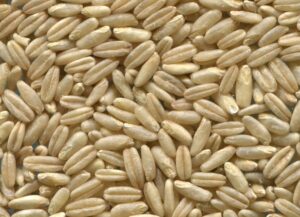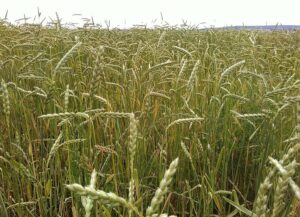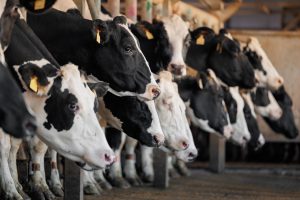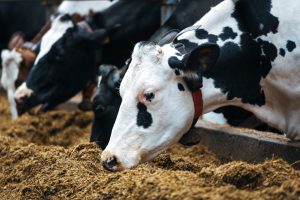Álvaro García
Blends of gasoline have different prices depending on the performance expected from the vehicle. Similarly, modern livestock breeds outperform older genetics, provided they receive the right “fuel”. Efficiency in today’s livestock production implies transforming every kilogram of nutrients paid for into saleable products. In most US livestock production systems corn is “king” when it comes to increasing the energy density of the diet.
The key to superior animal performance, is not how much cows eat but how much is retained in animal products, and this is the concept of digestibility. As digestibility increases, so does feed efficiency or the kgs of feed needed to produce 1 kg of animal product (milk, beef, etc.). In corn grain the largest nutrient by weight (approximately 70% of the total) is starch. Increasing its utilization thus bear a large impact on animal performance.
Starch in the kernel is encapsulated water-tight (hydrophobic) globules in a matrix made of a protein called prolamin which comprises 50-60 % of all kernel protein. The starch present in vitreous corn is more intricately associated with prolamin, increases its water impermeability, and thus reduces the accessibility of starch-degrading enzymes. It is precisely prolamin that is responsible for the vitreous characteristic of certain corn varieties which determine their digestibility, and the energy livestock obtain from them.
Ensiling, and steam flaking also influence starch digestibility by debilitating this protective coating and allowing enzyme access. Particle size reduction has a similar effect as it increases the surface of attack for starch-degrading enzymes. To be on the safe side and maximize starch digestion one could suggest grinding corn as much as feasible, without slowing down too much the mill throughput.
On the flip side, grinding grain too fine can increase digestibility excessively resulting in a very fast starch fermentation in the rumen. This drops the pH, reduces fiber digestibility, limits bypass starch, and increases the risk of subclinical/clinical acidosis. An optimum particle size needs to be defined that optimizes starch utilization without affecting animal health or performance.
A 2020 experiment by Goeser et al. used commercially ground corn samples to analyze Geometrical Mean Particle Size (GMPS), prolamin, and in situ rumen starch digestibility. The ultimate objective was to find if there was a relationship between prolamin, GMPS, and in situ rumen starch digestibility. Commercial dry and ground shelled corn samples were analyzed for starch, prolamin, particle size, surface area, and in situ rumen starch digestibility at 0, 7, and 16 hours of in situ incubation.
Relationship between particle size and starch content
Grain particle size in samples arriving from different mills, was positively correlated with surface area, and starch content. The authors explained that larger “fuller” grains would be judged by mill operators as needing more grinding (or smaller screen openings).
Surface area was positively correlated with in situ incubation for 7 hours, in a way that for every unit increase in surface area the starch digestion at 7 hours increased by 0.22 units. This is expected since greater surface area would allow increased fermenting activity by rumen microorganisms.
This, however, does not necessarily mean that this increased surface area will result in overall greater total diet digestibility. More grain fermentation produces more VFAs, which lower rumen pH, negatively interfering with fiber digestibility, and counteracting the positive effects of increased grain digestibility.
Prolamin was not associated with fermentation at 0 or 7 hours but was associated quadratically with 16-hour incubation. Since prolamin protects starch from enzyme degradation this means that more starch was fermented at 16-hours. From a practical standpoint, cows at peak lactation with higher intakes and rates of passage, need highly digestible forages that are less affected by the increased corn digestibility, thus synchronizing nutrient supply for a higher growth efficiency of rumen microorganisms.
Corn grain for dairy cow feed should be ground to a GMPS of less than 400 μm
Results of the GMPS in this experiment were consistent with previous research. In situ rumen starch digestibility decreased with increasing GMPS from 404.7 to 1,378.8 μm. The feed industry currently suggests grounding corn finely in dairy cow feeds to a GMPS if feasible of less than 400 μm. Varieties with more prolamin content (roughly 6 to 8 g of prolamin protein per 100 g of starch) benefit from grinding to smaller GMPS.
The effect of the stage of lactation is also important, since it determines retention time in the rumen. A cow in peak lactation requires smaller particle size to stimulate intake, and highly digestible forages to sustain high milk production, compared to that same cow later in lactation. The challenge for early lactation cows is not only their rate of passage, but also lower rumen pH.
There is a delicate balance between overall feed particle size that encourages intake and yet stimulates saliva production to buffer this acidy, and too large of a particle size that induces sorting behavior and leads precisely to the unintended outcome, subclinical and/or clinical acidosis.
It is the opinion of the author that the corn GMPS for an individual farm should not be independent of the quality of the forage used and the actual feed particle of the TMR of that farm. The economic implications of grinding corn at the right particle size can also be understood with the following example. A high producing Holstein cow eating 25 kg of DM from a TMR, can consume approximately 2.5 kg of starch from 7 kg DM of corn silage, and 7.5 kg of starch from 13 kg of concentrate, for a total of 10 kg of starch.
Since research has shown cows can digest a maximum of approximately 2.5 kg of starch in the intestines, to reach at least 75% starch digestibility in the rumen (7.5 kg fermented) it is necessary to minimize starch losses in the feces.
Conclusions
In summary, the goal of corn grain processing must be to optimize starch fermentation in the rumen so as not to exceed the digestive capacity in the lower GI tract, and thus minimize starch losses in feces. Understanding the effects of prolamin and grain particle size on starch digestibility can help accomplish this goal. Feeding grain of inadequate particle size is costly not only from a feed utilization perspective, but also because of potential negative health effects in dairy cows.
Reference
John P. Goeser and Randy D. Shaver. 2020. Commercial ground corn grain samples vary in particle size metrics and in situ rumen starch digestibility. Applied Animal Science 36:610–614.
© 2020 Dairy Knowledge Center. All Rights Reserved.









